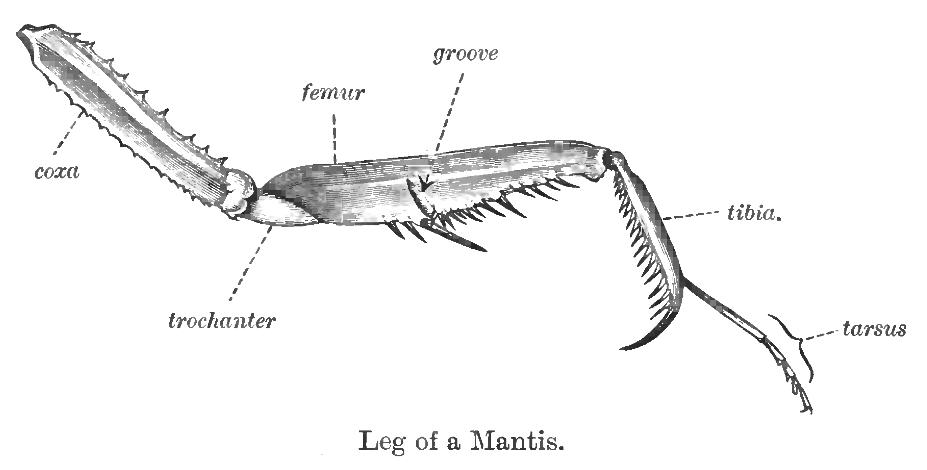|
Stagmomantinae
The Stagmomantinae are a subfamily of mantids within the family Mantidae, found in the Americas. Tribes and Genera The ''Mantodea Species File'' lists five genera in two tribes: Antemnini *'' Antemna'' Stal, 1877 *'' Hondurantemna'' Rodrigues, Rivera, Reid & Svenson, 2017 Stagmomantini *''Phasmomantis ''Phasmomantis'' is a genus of mantis of the family Mantidae. Species There are two species recognized in the genus ''Phasmomantis'': *''Phasmomantis basalis'' (Carl Stal, Stal, 1877) *''Phasmomantis sumichrasti'' (Saussure, 1861) See also *Lis ...'' Saussure, 1869 *'' Stagmomantis'' Saussure, 1869 *'' Tauromantis'' Giglio-Tos, 1917 References Mantidae Mantodea subfamilies {{mantidae-stub ... [...More Info...] [...Related Items...] OR: [Wikipedia] [Google] [Baidu] |
Phasmomantis
''Phasmomantis'' is a genus of mantis of the family Mantidae. Species There are two species recognized in the genus ''Phasmomantis'': *''Phasmomantis basalis'' (Carl Stal, Stal, 1877) *''Phasmomantis sumichrasti'' (Saussure, 1861) See also *List of mantis genera and species References Stagmomantinae Mantodea genera Taxa named by Henri Louis Frédéric de Saussure {{Mantidae-stub ... [...More Info...] [...Related Items...] OR: [Wikipedia] [Google] [Baidu] |
Mantidae
Mantidae is one of the largest family (biology), families in the Order (biology), order of Mantodea, praying mantises, based on the type species ''Mantis religiosa''; most genera are tropical or subtropical. Historically, this was the only family in the Order (biology), order, and many references still use the term "mantid" to refer to any mantis. Technically, however, "mantid" refers only to members of the family Mantidae, and not the numerous remaining Family (biology), families of mantises. Some of the most recent classifications have promoted a number of the mantid subfamily, subfamilies to the rank of Family (biology), family, e.g. Iridopterygidae, Sibyllidae, Tarachodidae, Thespidae, and Toxoderidae, while other classifications have reduced the number of subfamily, subfamilies without elevating them to higher rank. Subfamilies and genera Following the major revision of the Mantodea in 2019, the ''Mantodea Species File'' includes ten subfamilies: Choeradodinae The Amer ... [...More Info...] [...Related Items...] OR: [Wikipedia] [Google] [Baidu] |
Stagmomantis
''Stagmomantis'' is a genus of mantis consisting of 22 species found in the Americas. Description ''Stagmomantis'' species are medium sized, generally measuring around four to six centimeters, with females being larger than males. Individuals can be mixes of green and brown, as well as gray. Both males and females have wings, with males' being noticeably larger. Despite having shorter wings, female ''Stagmomantis'' are larger in length and breadth. Environment Species can be found throughout North and South America, ranging from around 40° N in the United States to 8° S in Brazil. ''Stagmomantis'' can be found in a variety of habitats, from arid to tropical regions, including grasslands, desserts, rainforests, and even urban environments. Species There are 22 recognized species of ''Stagmomantis,'' with ''S. montana'' having the additional subspecies ''S. montana sinaloae''. *'' S. californica'' Rehn & Hebard, 1909 *'' S. carolina'' Johansson, 1763 *'' S. coerulans ... [...More Info...] [...Related Items...] OR: [Wikipedia] [Google] [Baidu] |
Subfamily (biology)
In biological classification, a subfamily (Latin: ', plural ') is an auxiliary (intermediate) taxonomic rank, next below family but more inclusive than genus. Standard nomenclature rules end botanical subfamily names with "-oideae", and zoological subfamily names with "-inae". Detarioideae is an example of a botanical subfamily. Detarioideae is a subdivision of the family Fabaceae (legumes), containing 84 genera. Stevardiinae is an example of a zoological subfamily. Stevardiinae is a large subdivision of the family Characidae, a diverse clade of freshwater fish. See also * International Code of Nomenclature for algae, fungi, and plants * International Code of Zoological Nomenclature The International Code of Zoological Nomenclature (ICZN) is a widely accepted Convention (norm), convention in zoology that rules the formal scientific name, scientific naming of organisms treated as animals. It is also informally known as the I ... * Rank (botany) * Rank (zoology) R ... [...More Info...] [...Related Items...] OR: [Wikipedia] [Google] [Baidu] |
Mantodea
Mantises are an Order (biology), order (Mantodea) of insects that contains List of mantis genera and species, over 2,400 species in about 460 genera in 33 families. The largest family is the Mantidae ("mantids"). Mantises are distributed worldwide in temperate and tropical habitats. They have triangular heads with bulging eyes supported on flexible necks. Their elongated bodies may or may not have wings, but all mantodeans have forelegs that are greatly enlarged and adapted for catching and gripping prey; their upright posture, while remaining stationary with forearms folded, resembling a praying posture, has led to the common name praying mantis. The closest relatives of mantises are termites and cockroaches (Blattodea), which are all within the superorder Dictyoptera. Mantises are sometimes confused with stick insects (Phasmatodea), other elongated insects such as grasshoppers (Orthoptera), or other more distantly related insects with raptorial ... [...More Info...] [...Related Items...] OR: [Wikipedia] [Google] [Baidu] |
Americas
The Americas, sometimes collectively called America, are a landmass comprising the totality of North America and South America.''Webster's New World College Dictionary'', 2010 by Wiley Publishing, Inc., Cleveland, Ohio. When viewed as a single continent, the Americas or America is the 2nd largest continent by area after Asia, and is the 3rd largest continent by population. The Americas make up most of the land in Earth's Western Hemisphere and comprise the New World. Along with their Lists of islands of the Americas, associated islands, the Americas cover 8% of Earth's total surface area and 28.4% of its land area. The topography is dominated by the American Cordillera, a long chain of mountains that runs the length of the west coast. The flatter eastern side of the Americas is dominated by large river basins, such as the Amazon basin, Amazon, St. Lawrence River–Great Lakes, Mississippi River System, Mississippi, and Río de la Plata Basin, La Plata basins. Since the Americ ... [...More Info...] [...Related Items...] OR: [Wikipedia] [Google] [Baidu] |


